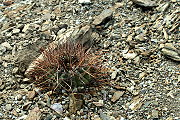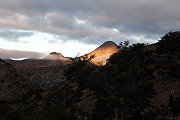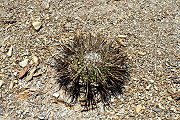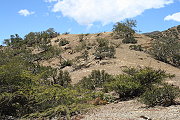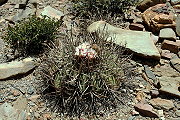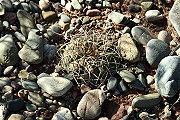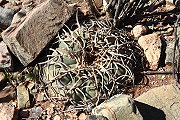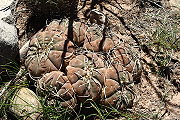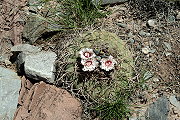Gymnos in habitat
Gymnocalycium cardenasianum F. Ritter
From February to July of 1953 Friedrich Ritter resided in Bolivia. On February 23rd, 1953, coming from Curque, he spent a day walking down a ravine towards the village of Carrizal. On the way he located a new Gymnocalycium. The plants were assigned the field number FR 88. His sister, Mrs H. Winter, started to distribute the seeds via catalogue in 1955, initially labelled G. cardenasii. Since 1959, the seeds are sold as FR 88 G. cardenasianum - spec. nov. de Tarija, Bolivia. The following could be read in the Winter catalogue of 1959, page 14: velvet-like, light blue, elongate spination, light horn-coloured, dark pointed. Flower large pink. Especially characteristical, unmistakable, very beautiful species. The Latin description was published by Ritter in Taxon 13(4):144, in 1964.
The range of G. cardenasianum is relatively limited; it stretches from El Puente in the north to Tojo in the south, a north-south expansion of roughly 80 kilometres.
Further populations can be found at about 30km linear distance north-east of El Puente, in the valley of the Rio Paicho. Those plants were described by Ritter as G. armatum. Based on today's state of knowledge the plants belong to G. cardenasianum, whether as variety or as form is debatable. They're extraordinary specimen in any case.
